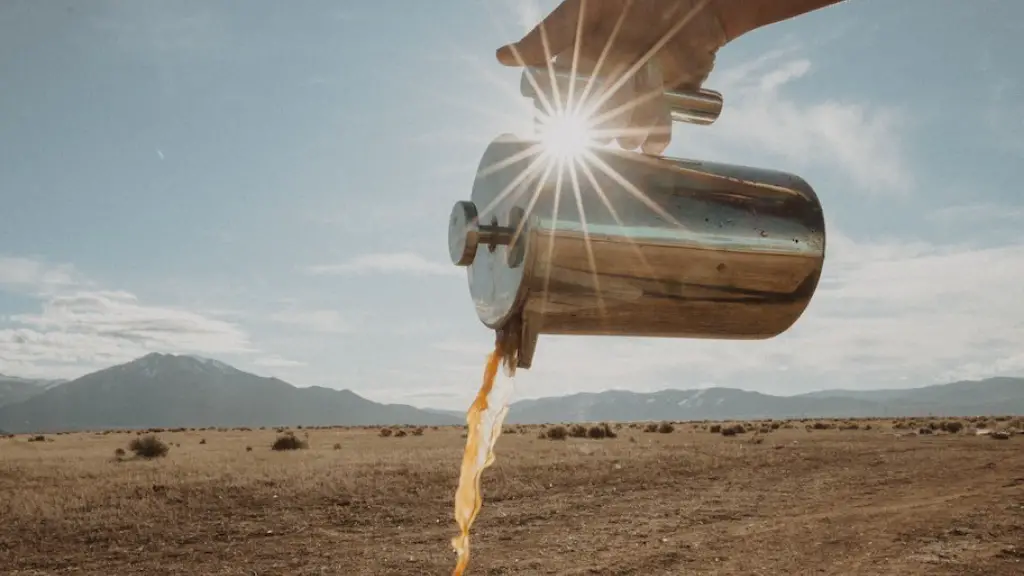Can I Drink Coffee 48 Hours After Tooth Extraction
Having a tooth extracted is a serious and painful procedure, due to the surgical operation required. Surprisingly, many people often have questions not just about post-procedure cares, but also about what types of beverages they can consume and when.
In particular, a common question asked is if it’s okay to drink coffee 48 hours after tooth extraction. With the understanding that each person and procedure is different, here are a few insights to consider.
First, you should always consult with your dentist or oral surgeon to understand best practices for your own situation. That being said, for those who enjoy coffee, the primary concern is usually the temperature. As with any hot liquid, the last thing you want to do is experience any burning sensations near the extraction site so it’s best to wait a few days before trying to drink coffee.
Secondly, the issue of caffeine presents its own risks. Stimulants like caffeine can cause a spike in your blood pressure, and when combined with the already increased blood flow for healing, it could exacerbate post-operation swelling and discomfort.
Lastly, there is the small matter of additional bleeds following the operation. Cup of hot coffee can relax the blood vessels, which again can affect the healing process in a negative way. This do not necessary apply to other beverage like tea and soup.
Overall, the primary two things to consider are the temperature and the risk of additional bleeding. If your procedure was not overly complicated and your sutures have healed, you may want to wait 48 hours to be sure.
Why Is Cleaning Necessary Around the Extraction Site?
Cleaning a tooth extraction site is a prudent idea because it helps remove bacteria, food particles, and other debris that may accumulate. This should be done around once a day and involves a gentle brushing of the teeth near the area where the extraction occurred. This helps prevent infection and aids in the healing process.
On top of this, good oral hygiene habits like regular brushing and flossing are also recommended to help get rid of harmful bacteria and build-up from the mouth and surrounding areas. Adding mouthwash to your daily routine may also be beneficial in maintaining cleanliness in the extraction sites.
It’s also a great idea to avoid extreme temperatures, sugary drinks, and acidic beverages near the extraction site as these substances are more likely to aggravate the healing process. Also, if there was any bone grafting involved in the process, the area should be swabbed with saline or antiseptic solutions two to three times a day.
What Are the Best Foods to Eat Following an Extraction?
One of the biggest concerns following a tooth extraction is eating food. It is normal to want to eat something soft and that does not require a lot of chewing. Soup, mashed potatoes, and yogurt are examples of good soft food for this time period. Smoothies and ice cream are also good options, but you should either avoid putting any chunks of food in them or mash them up beforehand.
Avoiding hard or crunchy foods, spicy dishes, and acidic foods like citrus fruits is an important step to take. Additionally, you should avoid smoking and drinking from a straw for at least 48 hours. These items can cause more bleeding, as well as irritate the site and hinder the healing process.
What Are the Signs of Infection Following Tooth Extraction?
One primary risk after a tooth extraction is the potential for an infection. This tends to be more common in individuals who failed to take proper post-operative care and in cases of complicated extractions. Signs of an infection include inflammation, redness, and increased pain levels in the extraction site.
Fever and swelling are also potential signs of an infection, as well as an unpleasant taste or odor coming from the area where the extraction occurred. If any of these symptoms occur, visit your dentist as soon as possible.
How Long Should I Expect the Healing Process to Take?
In general, the healing process for a tooth extraction usually occurs over the course of a few weeks for non-complicated extractions. But there are some things you can do to speed it up. Keeping the site clean and avoiding smoking and alcoholic beverages can help reduce the risk of infection and other complications.
You should also let your dentist know if there is sustained pain, noticeable bleeding, signs of swelling, and other symptoms that change or become more worrisome. Your dentist may be able to give you different instructions such as a special mouthwash or taking antibiotics to address the concern.
How Can I Reduce the Pain and Discomfort?
At home, you can reduce the discomfort by taking over-the-counter pain relievers and antibiotics as prescribed by your dentist. Additionally, for the first few days, try to avoid touching and moving the area that was operated on. Use a soft-bristled toothbrush and warm saltwater rinses to help reduce pain and discomfort.
You can also use an ice pack or put an ice cube in a plastic bag and press it against the area where the tooth was extracted. This can help reduce swelling and discomfort. Another potential remedy is to hold a cold compress between your cheek and gum to reduce inflammation and relieve pain.
What Are the Benefits of Having a Tooth Extracted?
The main benefit of having a tooth extracted is that it can make the mouth function better by removing the affected tooth, or teeth, that can be causing pain or discomfort. Removing teeth may also prevent the spread of tooth decay and gum disease and improves overall oral hygiene. Additionally, it can also improve the appearance of smile, remove crowding from other teeth, and improve the ability to chew and speak normally.
In some cases, removing a tooth may be necessary for other more complicated dental procedures, such as the insertion of an implant or the application of braces. If a severely damaged tooth is not extracted, the infection can spread to a different part of the jaw and potentially cause more serious issues. Removing the tooth can help avoid these risks.
Are There Any Tests That Can Be Done Before Having a Tooth Extracted?
Yes, before having a tooth extracted there are several tests that can be done to ensure the patient’s safety and comfort level. For engaging in a complex procedure such as a dental extraction, your dentist may recommend a physical, or they may opt to take an X-ray of the area in question to determine the extent of the damage.
In other situations, it may be recommended to either perform a blood test or to run an additional series of tests to make sure that the patient is healthy and physically ready to endure the procedure. All of these steps are necessary to make sure that the patient is healthy enough for the extraction.
What Happens When a Tooth Is Not Extracted?
In short, leaving a damaged or decayed tooth can lead to a variety of problems. If the problem is not fixed the decay or infection can spread from the damaged tooth to other teeth and even to other parts of the body. Decay can cause pain and, in severe cases, can lead to abscesses or other more severe, life threatening infections.
Not extracting the decayed tooth can eventually lead to more serious effects such as loss of jawbone and other critical dental issues that can potentially impede normal functions, with the most serious being loss of life. In general, if possible, it’s better to remove the affected tooth, despite the discomfort that may come with the procedure.





